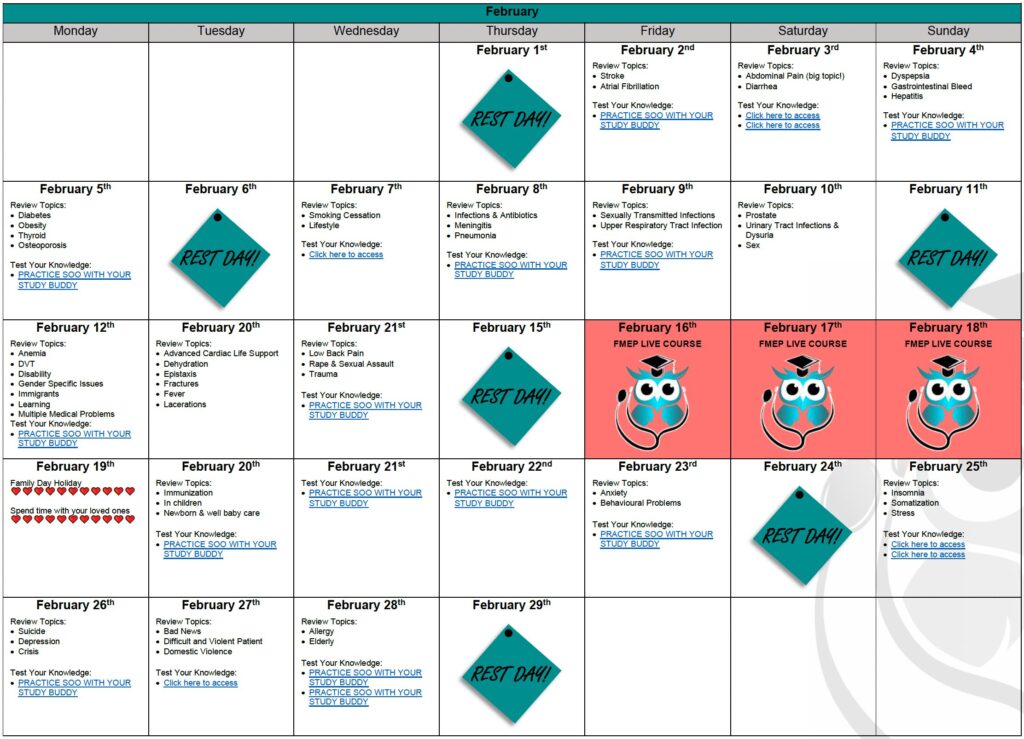
YOUR DETAILED CCFP EXAM STUDY CALENDAR: BE PREPARED!
The CCFP exam is quickly approaching. We know you are juggling many personal and professional...
Comments Off on YOUR DETAILED CCFP EXAM STUDY CALENDAR: BE PREPARED!
Just a reminder… pay attention to the questions. Here are our general tips one more time:
1. Pay attention to the questions. Look carefully at how many items you are being asked to list. If the question asks for five items, you will not get more marks if you list eight items; the examiner will look at the first five and allocate marks only for the first five answers – so be careful. On a SAMP, if it is not clearly stated how many items you should list, look at the amount of points/marks being allocated for the question to get an idea of how many answers the examiner may be anticipating you write down.
2. Do not write lengthy answers. Most questions can be answered in 10 words or less!
3. Be specific when writing down investigations (hemoglobin instead of CBC; CT abdomen instead of CT).
4. Remember that trade names and generic names are both acceptable when writing down medications.
5. For more helpful tips, you can refer to CCFP’s SAMP instructions by clicking here.
SAMP
Mr. MM, a 43 year old male, presents to your office with his sister. She has brought him into your office as she notes he has been seeing ghosts and dinosaurs. He is also suspicious of her poisoning his food and is not eating. His past medical history shows he had a first-episode psychosis three years ago and was started on Risperidone. He is not taking any other medications. He is not using substances. You do a thorough workup to rule out secondary causes – the workup comes back negative. (13 points)
1. Which antipsychotic is most effective for schizophrenia treatment? (1 point)
2. Name three long-acting injectable second-generation antipsychotic medications? (3 points)
3. List five side effects of antipsychotic medications? (5 points)
4. What is tardive dyskinesia? (1 point)
5. Apart from tardive dyskinesia, what are three other extrapyramidal symptoms that may occur secondary to the use of antipsychotic medications? (3 points)
Helpful CFPC Resource:
https://www.cfp.ca/content/67/5/350